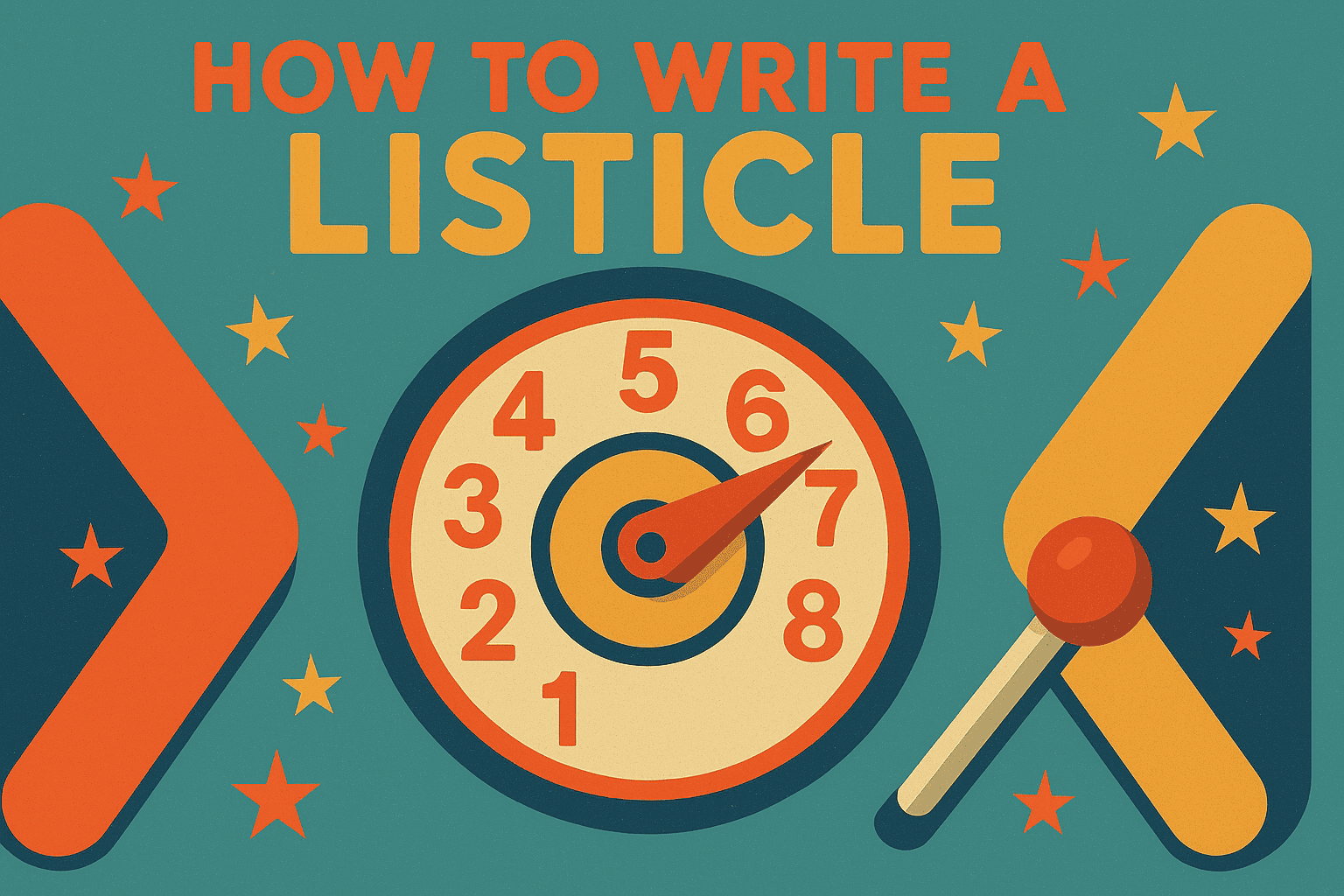Wondering how to write a listicle but don’t know where to start?
Listicles are back in 2025 and for good reason too: they work for both AI and the human brain.
Here’s my guide to how to write a listicle in the AI age.
1. Pick the right number
When you’re writing a listicle, the number you use in your heading (and therefore the number of points in your listicle itself) matters a lot. If it’s too big people will see reading it as too much effort. If it’s too small, people will think it’s not substantial enough.
Avoid writing “101 reasons” for any topic, no matter how many think of. Some studies think as few as 9 points is too many. Personally, I like 5 and 7.
2. Pique curiosity but stay honest
People are inherently curious, so give them a reason to click. But just make sure you can follow through.
Readers don’t mind being teased, but no one likes being tricked. And research shows that “curiosity gap” headlines fail when they mislead.
Here’s an example of both a good and bad listicle heading:
Good: “7 Marketing Tactics that Boosted our Revenue by 40% (With Screenshots)” (Specific, honest and concrete).
Bad: “7 Marketing Secrets that Will Change Everything (Guaranteed)” (Vague, overpromising and priming the reader for disappointment).
3. Mix quick hits with deeper dives
Not every point needs to be an essay, but not every point should be a one-liner either. A good listicle provides a nice scannable takeaway between meatier insights.
It’s this balance that keeps readers scanning instead of dropping out.
4. Back up your claims with data and examples
Readers today are sceptical, and unsupported claims damage credibility faster than you think. So if you can’t find evidence to back what you say, don’t write it – you’re doing yourself more harm than good.
When it comes to B2B content, case studies are one of the most effective forms of content, the Content Marketing Institute found. That’s because they compel action by pairing claims with real-world outcomes.
5. End your listicle with a payoff
Don’t just stop abruptly at your final point. Wrap up your listicle with a clear takeaway, next step or strong closing line. Your readers want to feel like they’re at the finish line, not being dropped off mid-scroll.
Oh, and make sure you finish with a strong call to action (CTA)…
Stop paying for volume. Start investing in clarity.
Our consultancy model is built for businesses that want sharper positioning and high-impact content, not endless filler. Let’s explore how it could work for you.
Book a Free 15-Minute Strategy Call
